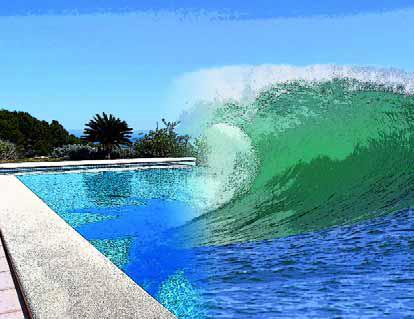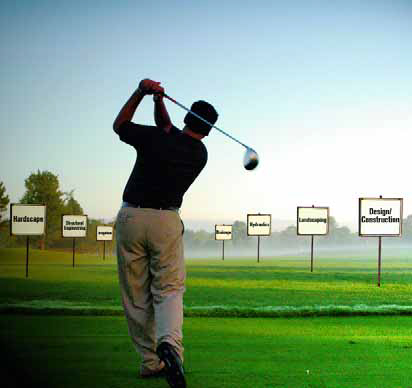Professional Watershaping
As designers, we learn to evaluate landscapes and watershapes with critical eyes, deciding if we like a plant palette, for example, or if a hardscape makes sense or a watershape is sited properly in a yard. These critical skills are important, because clients hire us to pull all of those elements together and develop solutions that suit their needs as well as those of the setting. On rare occasions, a design/build project will stay on a straight course from initial concept to execution. Usually, however, I know that any ideas or biases I carry onto a job site will change and become more complex as I get to know my clients' wants, needs and desires. In other words, my critical skill - my designer's point of view - is consistently
If you've been paying any attention to the media lately, you may have noticed that watershaping is "in" as a big-time topic for television, books, magazines, newspapers and other forms of mass communication. Never in all my years as part of this industry can I recall a time during which the subject of beautiful custom pools, spas, fountains, ponds, streams and interactive bodies of water has won so much attention. It seems as if our society has finally caught on to the power, beauty and excitement of the art form many of us
With few exceptions, the most satisfying projects we've undertaken through the years have come when our company has gotten involved with talented architects or landscape architects - and sometimes both - as part of larger project teams. We embrace this sort of work and enjoy taking a role as a resource for other professionals. Through the years, in fact, these collaborations have developed to a point where many of those we work with will automatically call us whenever one of their projects includes any sort of
For years now, I've listened to people gripe about trade shows - how dull they are and why attending them is such a colossal waste of time. It's gotten to a point where it's almost fashionable to take these shots, and I hear them not just about the pool shows with which I'm vastly familiar, but also about the landscape shows of which I've attended just a few. Actually, I've been attending trade shows for longer than I care to remember. Although just about every one of them managed to include some useful or positive experience, there's no question that I've approached them with diminishing enthusiasm through the years. I've never given up on them entirely, but I know a great many people who
Even though color is literally everywhere, most people know surprisingly little about it. That's a knowledge gap designers in particular should overcome, says artist, colorist and teacher Judith Corona, who adds that understanding the nature of color, how it influences moods and emotions and how a color wheel works are all useful when it comes to making valuable recommendations to clients about their watershapes and landscapes.
In last month's "Detail," I discussed the beginning stages of a new project that has my partner Kevin Fleming and me pretty excited. At this point, the pool's been shot and we're moving along at a good pace. I'll pick up that project again in upcoming issues, but I've brought it up briefly here to launch into a discussion about something in our industry that mystifies me almost on a daily basis. So far, the work we've done on the oceanfront renovation project has been focused on a relatively narrow band of design considerations having to do with the watershape and its associated structures. This focus is
Beginning a project can be wonderfully exciting, especially when you're working in a beautiful place with a terrific client who wants something truly elegant and special. In fact, I can honestly say that there's nothing quite like the exhilaration of stepping into a new situation with great potential, defining those possibilities and watching a client's eyes light up with the fire of inspiration. Case in point: Not long ago, my partner Kevin Fleming and I were called out to a job site on Long Beach Island, N.J., by local landscaper Mark Reynolds, who'd heard of us and our reputation for using top-quality materials in top-flight designs. When we pulled up, the first thing I noticed was the
Practice makes perfect when it comes to developing the observational skills you need to support your design acumen. As I discussed last month, honing these abilities enables a designer to see individual and collective shapes within a garden setting in ways that can enhance the overall appearance of plant/hardscape combinations and turn them into cohesive and more compelling visual compositions. Among all of those artistic abilities is one specific skill that has served me best and will be my subject in this column: That is, the ability to determine the level of contrast my clients want to see in their garden spaces. As an artist, I've always been inspired by the areas in paintings that display the






















